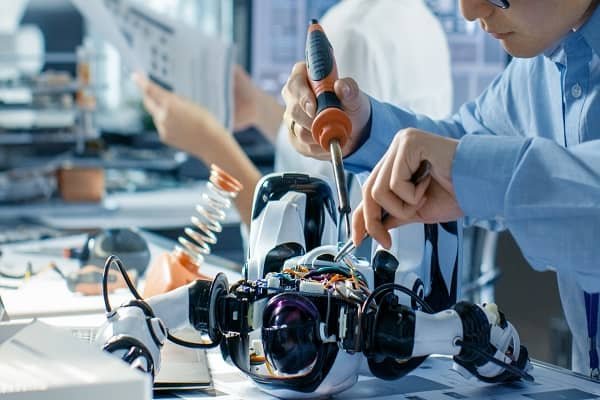1. Robotics
Robotics and automation engineering involves designing, manufacturing and operating robots that can perform physical tasks on their own. These robots typically work in industries that require repetitive and difficult jobs, or in dangerous environments where humans cannot do the job safely.
Robotics and automation engineering are designed to perform a specific task, and they can do it much faster and more efficiently than human workers could do it. They are also designed to do it safely and without errors.
They are usually controlled by a computer program that determines what, when and how the robot will do what it does. They can be programmed using one of more than a thousand different programming languages.
Robots are a great way to increase efficiency, especially when it comes to repetitive and tedious tasks. They also help reduce vigilance decrement, the lapse in concentration that can occur when humans are doing the same tasks over and over again.
2. Automation
Automation is the use of computer-related technologies to perform a process. It involves combining preprogrammed commands with automatic feedback control, such as in the case of robots, which operate without human intervention.
Automated systems are complex and powerful. They can perform tasks in ways that humans cannot and they perform with more precision and accuracy than their human counterparts.
They also improve safety in the manufacturing processes where a number of different products have to be produced with varying degrees of quality. They can reduce the risk of lapses from human error and subjective judgment.
ISA is the leading association in the field of industrial automation. Its membership includes engineers, technicians and management engaged in the development and application of industrial automation.
ISA provides standards, certifications and training to advance technical competence. Its resources are designed to help engineers and technicians develop their technical capabilities to meet automation challenges in the workplace. They also help businesses increase productivity and efficiency while reducing downtime.
3. Machine Learning
Machine learning is a branch of artificial intelligence that lets computers learn from experience. It’s behind self-driving cars and virtual assistants that suggest things you might want to watch on Facebook or listen to on Spotify.
Machines can also be trained to analyze medical images and diagnostic data, helping doctors make better diagnoses. It can also detect fraudulent credit card transactions or identify insider threats in a company’s networks.
While it’s a fast-moving field, there are some limits to how machine learning can be used. For example, machine learning algorithms can be biased by the data they’re fed.
To be an effective machine learning developer, you need strong skills in statistics, probability and calculus. You’ll also need to decide whether your model will be supervised or unsupervised, and how much data you’ll provide it.
